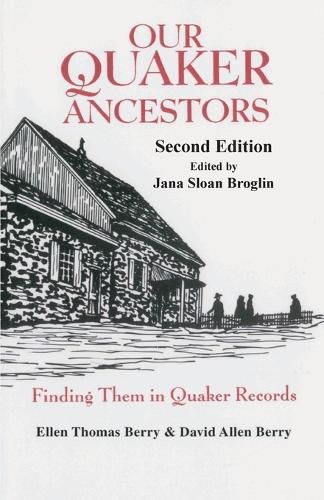Readings Newsletter
Become a Readings Member to make your shopping experience even easier.
Sign in or sign up for free!
You’re not far away from qualifying for FREE standard shipping within Australia
You’ve qualified for FREE standard shipping within Australia
The cart is loading…






This title is printed to order. This book may have been self-published. If so, we cannot guarantee the quality of the content. In the main most books will have gone through the editing process however some may not. We therefore suggest that you be aware of this before ordering this book. If in doubt check either the author or publisher’s details as we are unable to accept any returns unless they are faulty. Please contact us if you have any questions.
This guidebook describes the types of Quaker records that are available, the locations of the records, and the proper use of those records. It guides the researcher through the pyramidal meeting structure to the records of birth, marriage, death, disownment, and removal. The work begins with a history of the Religious Society of Friends’ movement and a discussion of its organization and structure, particularly as it affects genealogical research. Later chapters describe Quaker migrations to and within America, the special types of records available for research, and reliable methods for locating and using those records. The Appendices include a bibliography, maps of selected meeting locations, and a glossary of terms peculiar to the Religious Society of Friends. This second edition is a welcome update to this valuable resource. While the background, organization, migration patterns, meeting records, and the methodological problems associated with the history and records of the Religious Society of Friends remain the same, since the book’s first publication in 1986 the digitization of records and the advent of the Internet have made Quaker resources far more widely available. Many Quaker organizations have a current website that lists their holdings, contact information, and maybe digitized records or PDF transcripts. Accordingly, this second edition includes a new section devoted to websites, as well as a new bibliography of online resources.
$9.00 standard shipping within Australia
FREE standard shipping within Australia for orders over $100.00
Express & International shipping calculated at checkout
This title is printed to order. This book may have been self-published. If so, we cannot guarantee the quality of the content. In the main most books will have gone through the editing process however some may not. We therefore suggest that you be aware of this before ordering this book. If in doubt check either the author or publisher’s details as we are unable to accept any returns unless they are faulty. Please contact us if you have any questions.
This guidebook describes the types of Quaker records that are available, the locations of the records, and the proper use of those records. It guides the researcher through the pyramidal meeting structure to the records of birth, marriage, death, disownment, and removal. The work begins with a history of the Religious Society of Friends’ movement and a discussion of its organization and structure, particularly as it affects genealogical research. Later chapters describe Quaker migrations to and within America, the special types of records available for research, and reliable methods for locating and using those records. The Appendices include a bibliography, maps of selected meeting locations, and a glossary of terms peculiar to the Religious Society of Friends. This second edition is a welcome update to this valuable resource. While the background, organization, migration patterns, meeting records, and the methodological problems associated with the history and records of the Religious Society of Friends remain the same, since the book’s first publication in 1986 the digitization of records and the advent of the Internet have made Quaker resources far more widely available. Many Quaker organizations have a current website that lists their holdings, contact information, and maybe digitized records or PDF transcripts. Accordingly, this second edition includes a new section devoted to websites, as well as a new bibliography of online resources.